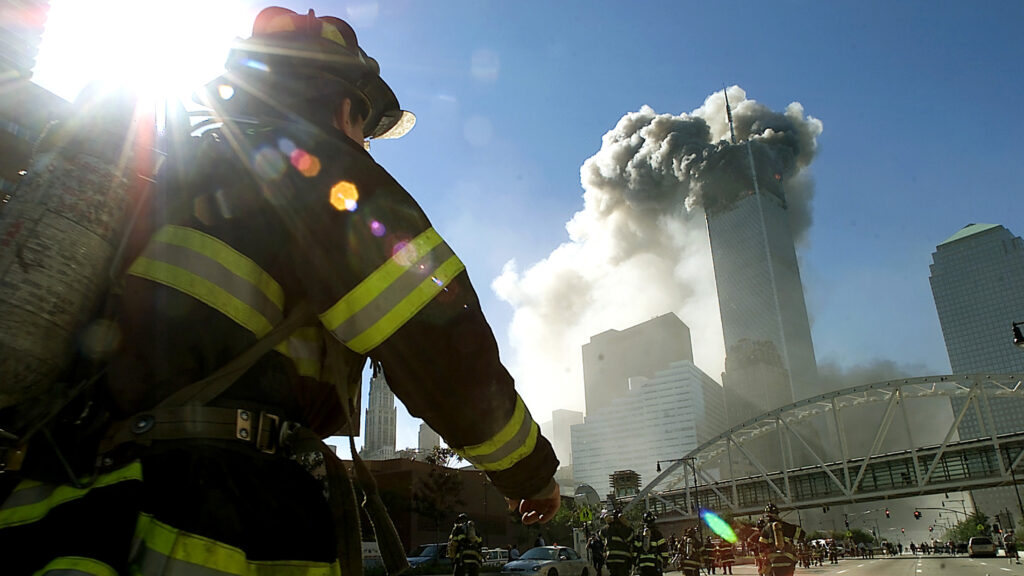Health
First responders on September 11 see higher rates of early-onset dementia

NEarly a quarter century after the September 11 attacks in New York City, first responders continue to face serious health consequences from their exposure to particulate matter in the aftermath of the World Trade Center collapse. More than 10,000 people who were in the area have been there diagnosed with cancerwith an incidence 30% higher than in the general population, and more first responders have died from it long-term health problems associated with the collapse than during the attack.
The toll continues to grow. A new study published Wednesday in JAMA Network Open found a significant increase in early-onset dementia among first responders on September 11 compared to the general population.
The study included approximately 5,000 9/11 responders who were younger than 60 years old at the start of the study and who had no symptoms of dementia or other neurological or cardiovascular conditions. Researchers followed them for an average of five years between 2014 and 2023 – and during that time, 228 respondents were diagnosed with dementia.
The incidence of dementia among people under 65 years of age is rare 1.2 persons per 1,000 between 30 and 64 years. But the percentage of early-onset dementia in the study group is almost 40 times higher. “We expected one to two, maybe at most three cases, and so seeing several hundred cases was a surprise,” said Sean Clouston, an epidemiologist in the Department of Family, Population and Preventive Medicine at Stony Brook University. and the lead author of the article.
The high incidence is even more striking, he said, because most of the people involved in the cohort were highly educated and held highly skilled jobs — a group that tends to see a lower incidence of dementia compared to the general population .
The findings are consistent with recent research exposure particulate matter, a form of air pollution that contains dirt and liquid particles so small they can be inhaled, increasing the risk of dementia. They also revealed a correlation between a responder’s level of exposure to dust and debris and the likelihood of a dementia diagnosis.
At the beginning of the study, respondents evaluated the severity of their exposure to particulate matter using a detailed questionnaire. It assessed their exposure to particulate matter and potentially neurotoxic waste (based on location and type of work they performed), duration of work and use of personal protective equipment. Based on their answers, researchers divided their exposure into five categories of increasing severity.
The study found that diagnosis of dementia increased as the severity of exposure increased. Of the 89 respondents with severe exposure, 12 were diagnosed with dementia. But only three of 342 respondents with low exposure – including first responders using protective equipment such as hazmat suits and respirators – received a diagnosis.
The lower incidence of dementia among first responders wearing personal protective equipment has important implications for practice, says Roberto Lucchini, professor of occupational and environmental health sciences at Florida International University’s Robert Stempel College of Public Health and Social Work, who was not involved in the study.
“We have situations where we are exposed to these kinds of toxic substances and all these hazards in a variety of situations, including natural disasters … or destruction of buildings – collapses, demolitions or earthquakes,” said Lucchini, who studies post-September 11 particulate matter . in Florida, where he follows retired first responders who moved to the area from New York and New Jersey. “Situations where you can have this type of exposure are unfortunately quite common from a global perspective,” he said.
The findings support a growing body of evidence on the effects of air pollution and dust on the risk of neurodegenerative diseases, and could provide support for recommended interventions and precautions. “For the most part, we don’t advise people to wear masks at work because they could end up developing dementia,” Clouston said. “If you do work that involves a lot of dust exposure, maybe that should be a consideration.”
The mechanisms linking exposure to dementia need further investigation, Clouston said. “More research needs to be done to determine the precise mechanism,” he said. “But the current theory is that the dust or neurotoxic chemicals can somehow enter the brain.”
There are limits to the research, the most important of which is that exposure measures are based on what people remember doing and where – memories that may be incomplete and subject to bias. In more recent situations, such as an apartment collapse in Surfside, Florida, researchers have been able to directly assess exposure levels, Lucchini said. But on 9/11 this was not possible.
On the other hand, he pointed out, a study of World Trade Center first responders could be particularly valuable as researchers assess the impact of events such as building collapses, burning and challenging first responder conditions. “We can unfortunately extend this conversation to any conflict like Gaza or Ukraine, where you also have destruction, chemicals and a lot of dangers to human health,” Lucchini said. “We know a lot about this in the army, because they do a lot of research to protect the soldiers. But there has been almost no research on the general population affected by exposure in the war zones.”









